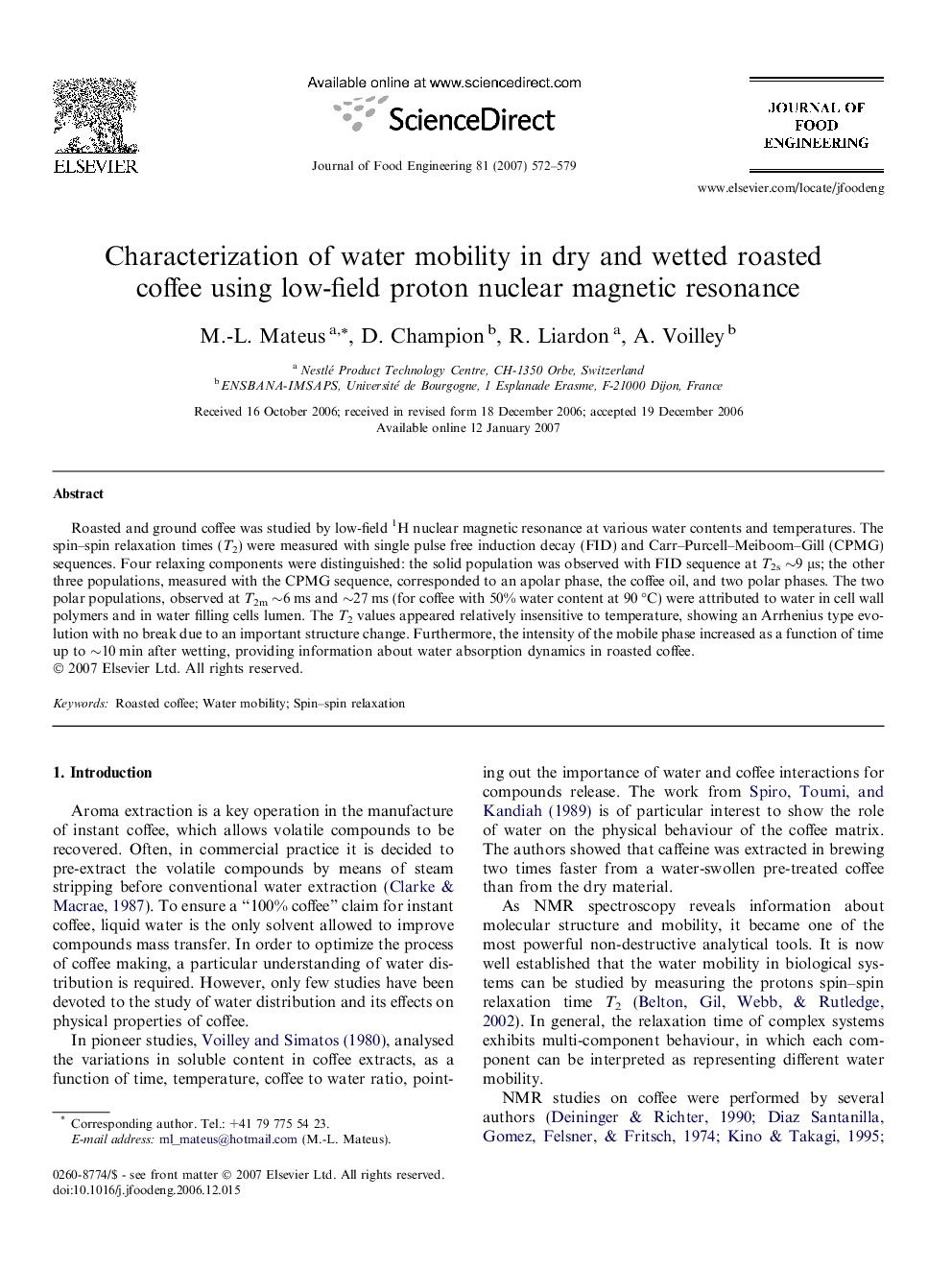| Article ID | Journal | Published Year | Pages | File Type |
|---|---|---|---|---|
| 225505 | Journal of Food Engineering | 2007 | 8 Pages |
Roasted and ground coffee was studied by low-field 1H nuclear magnetic resonance at various water contents and temperatures. The spin–spin relaxation times (T2) were measured with single pulse free induction decay (FID) and Carr–Purcell–Meiboom–Gill (CPMG) sequences. Four relaxing components were distinguished: the solid population was observed with FID sequence at T2s ∼9 μs; the other three populations, measured with the CPMG sequence, corresponded to an apolar phase, the coffee oil, and two polar phases. The two polar populations, observed at T2m ∼6 ms and ∼27 ms (for coffee with 50% water content at 90 °C) were attributed to water in cell wall polymers and in water filling cells lumen. The T2 values appeared relatively insensitive to temperature, showing an Arrhenius type evolution with no break due to an important structure change. Furthermore, the intensity of the mobile phase increased as a function of time up to ∼10 min after wetting, providing information about water absorption dynamics in roasted coffee.
